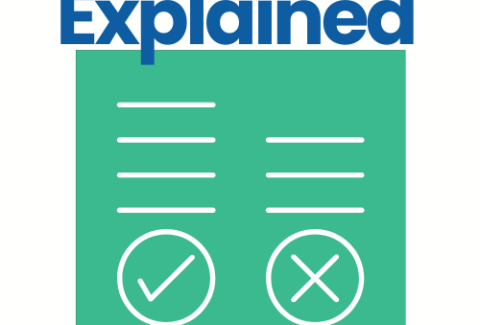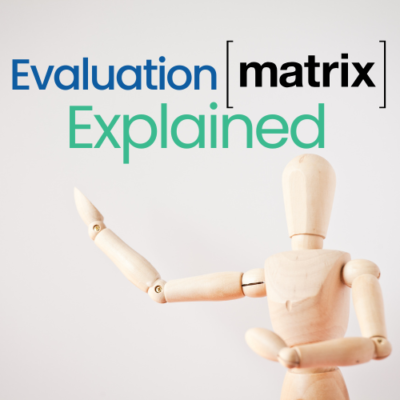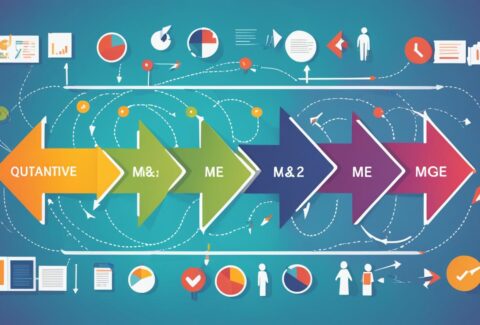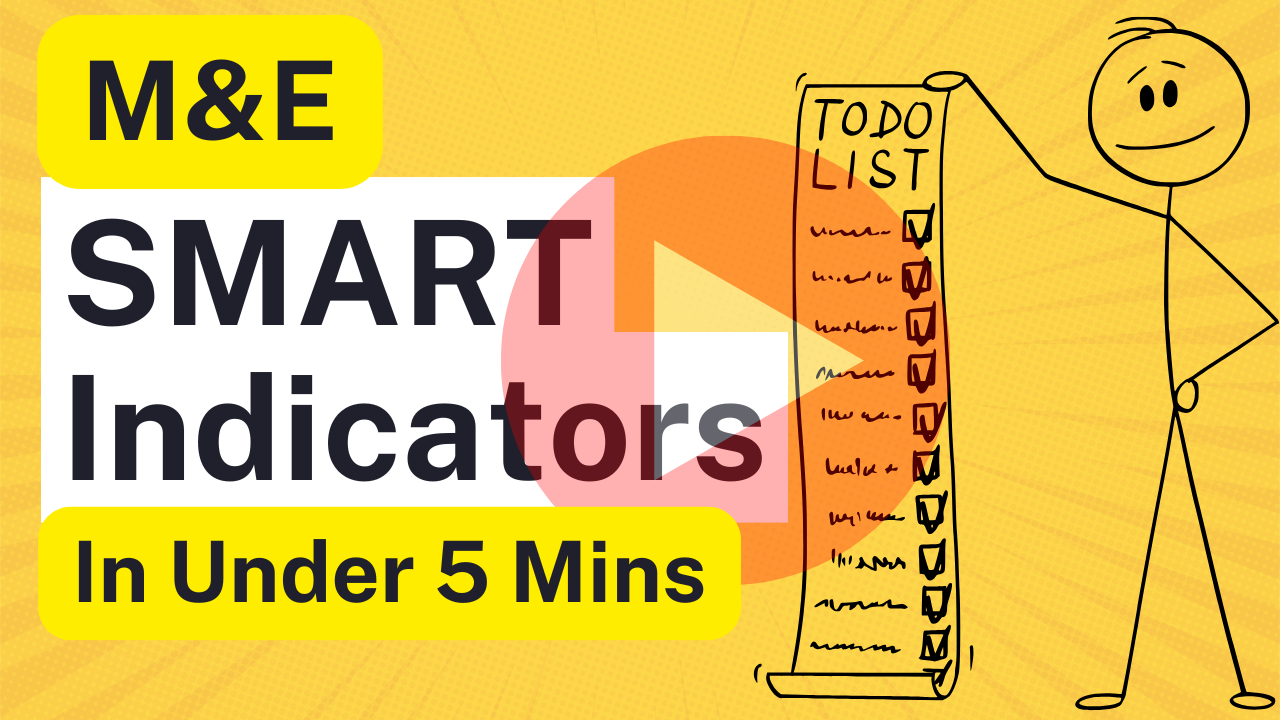Introduction to M&E in Nonprofits
January 8, 2024 2024-01-08 5:57Introduction to M&E in Nonprofits
As nonprofits grow and expand, it becomes crucial to assess the impact and effectiveness of their programs. By implementing effective M&E practices, nonprofit organizations can better understand their strengths and weaknesses, identify areas for improvement, and make data-driven decisions to achieve their mission.
Key Takeaways:
- Monitoring and Evaluation (M&E) is crucial for nonprofit success
- Effective M&E practices help nonprofits assess the impact and effectiveness of their programs
- Nonprofits can use M&E findings to improve their programs and services
- M&E is essential for measuring the impact of nonprofit programs and reporting the results to stakeholders
- Challenges and limitations may exist in implementing M&E practices, but nonprofit organizations can overcome them by building M&E capacity and adopting best practices
Understanding Monitoring and Evaluation
In nonprofit organizations, monitoring and evaluation (M&E) play a critical role in assessing the effectiveness and impact of programs. M&E involves systematically collecting and analyzing data to track progress, measure success, and identify areas for improvement.
M&E serves a dual purpose for nonprofits. Firstly, it helps them understand whether their programs and services are achieving the desired results and creating the intended impact. Secondly, it enables them to make data-driven decisions, implement changes, and improve program outcomes.
- Goal setting: Identifying clear and specific goals and objectives for the program.
- Defining indicators: Developing measurable indicators to track progress and assess program outcomes.
- Collecting data: Gathering relevant data through surveys, interviews, focus groups, and other methods.
- Analyzing data: Examining the collected data to identify trends, strengths, and areas for improvement.
- Interpretation: Interpreting the analyzed data to gain insights into program performance.
- Action: Using the insights gained through M&E to make data-driven decisions, implement changes, and improve program outcomes.
M&E is an ongoing process that requires continuous monitoring and improvement. By adopting effective M&E practices, nonprofits can ensure their programs and services effectively meet their mission and goals.
Key Components of M&E in Nonprofits
In order for monitoring and evaluation (M&E) to be effective in nonprofit organizations, it is essential to have clear goals and defined indicators. Without these, it can be challenging to know what to monitor or evaluate. Therefore, it is necessary to define specific objectives and outcomes that the organization wants to achieve and select indicators that will measure progress towards those objectives.
Additionally, collecting relevant data is crucial for effective M&E. Nonprofits need to identify what data is required to assess progress and determine whether program goals are being achieved.
Here are the four key components of M&E in nonprofits:
| Component | Description |
|---|---|
| Goal setting | Defining specific objectives and outcomes that the organization wants to achieve through its programs and activities. |
| Indicator definition | Selecting relevant and reliable indicators that will measure progress towards achieving the goals and objectives set by the organization. |
| Data collection | Gathering relevant data and information to assess progress and determine whether program goals are being achieved. |
| Data analysis and interpretation | Examining the data collected to identify trends, strengths, weaknesses, and insights that can be used to improve programs and services. |
Setting clear goals, defining indicators, collecting relevant data, and analyzing and interpreting that data are all essential components of effective M&E in nonprofits.
Developing an M&E Framework
Developing a comprehensive M&E framework is crucial for nonprofit organizations to achieve their mission and goals effectively. A framework provides a structured approach to monitoring and evaluating programs and helps ensure that the organization is delivering services that meet the needs of its stakeholders.
Steps in Developing an M&E Framework
The following steps can guide nonprofit organizations in developing an effective M&E framework:
- Define goals and objectives: The first step in developing an M&E framework is to define the organization’s goals and objectives. This helps steer the M&E process and ensures that the focus remains on the organization’s mission.
- Identify key performance indicators (KPIs): To assess the impact of programs accurately, KPIs need to be defined clearly. KPIs should be specific, measurable, achievable, relevant, and time-bound (SMART).
- Design data collection methods: The next step is to identify data collection methods that align with the organization’s goals and KPIs. Data collection methods may vary, depending on the program type, audience, and resources available.
- Develop a data management plan: A robust data management plan ensures that data is collected, analyzed, and stored systematically. The plan may include data quality assessments, data cleaning protocols, and data security measures.
- Plan for data analysis and reporting: The final step is to plan for data analysis and reporting. This includes outlining the processes for data analysis, interpreting the findings, and sharing the results with stakeholders.
By following these steps, nonprofit organizations can create an effective M&E framework that aligns with their mission and goals.
“A comprehensive monitoring and evaluation framework helps ensure that nonprofit organizations are delivering services that meet the needs of their stakeholders.”
Data Collection Methods for M&E
Effective data collection is critical to the success of monitoring and evaluation (M&E) in nonprofit organizations. By choosing appropriate methods, nonprofits can gather reliable data and generate valuable insights into program effectiveness. Some common data collection methods used in M&E for nonprofits include:
- Surveys: Surveys are a popular method of collecting data in M&E. They can be conducted online, by mail, or in-person. Surveys can be structured or unstructured and may include open-ended questions that allow respondents to provide detailed feedback.
- Interviews: Interviews are a more in-depth method of data collection, allowing nonprofits to gather detailed information about program impact. Interviews can be conducted face-to-face or over the phone and may be structured or unstructured.
- Focus Groups: Focus groups bring together a small group of individuals to discuss their experiences with a program or service. Focus groups can be useful for gathering qualitative data and identifying areas for program improvement.
Choosing the appropriate data collection method depends on the goals of the M&E process, the target audience, and the available resources. It is important to ensure that data collection methods are ethically sound and comply with data protection laws and regulations.
Tip: Including a mix of qualitative and quantitative data collection methods can provide a more comprehensive understanding of program impact and effectiveness.
Analyzing and Interpreting M&E Data
After collecting data, nonprofits must analyze it to measure program effectiveness. Analyzing data involves examining collected information using various statistical and qualitative methods to identify patterns and trends. Through this process, nonprofits can develop insights into what is working well in their programs and what needs improvement.
The process of interpreting M&E data involves drawing meaningful conclusions from the analyzed data. Nonprofits can use data interpretation to inform decision-making and program improvements. Data interpretation requires not only understanding the analysis but also synthesizing the results with program goals and objectives to determine how to move forward.
Tip: It is crucial to involve stakeholders in the analysis and interpretation process to ensure that their opinions are taken into account.
Nonprofits can use the following steps to analyze and interpret M&E data:
| Step | Description |
|---|---|
| 1 | Identify the purpose of the assessment and the research questions to be answered. |
| 2 | Develop a data analysis plan, detailing the statistical and qualitative techniques to be used. |
| 3 | Collect, clean, and organize data according to the plan. |
| 4 | Analyze data using appropriate statistical and qualitative techniques, respecting the assumptions of these techniques and always accounting for data quality. |
| 5 | Interpret the results, differentiating the most significant finding characteristics and possible methodological biases. |
| 6 | Draw conclusions and generate recommendations. |
It is essential to remember that data analysis and interpretation have to be part of an iterative process where you review findings continually and refine your methods and data over time.
Using M&E Findings to Improve Programs
Nonprofits are constantly striving to improve their programs and services to better serve their communities. Monitoring and evaluation (M&E) provides valuable data to help organizations identify areas for improvement and make data-driven decisions for program enhancements.
Using findings from M&E, nonprofits can analyze program strengths and weaknesses and identify opportunities for growth and enhancement. By incorporating feedback from stakeholders, nonprofits can refine program goals and improve outcomes for those they serve.
One effective strategy for using M&E findings is to establish a continuous improvement plan. This plan should outline specific actions to address identified program weaknesses and enhance program strengths. Regularly reviewing and updating this plan can help ensure ongoing program improvement and development.
Another key strategy is to communicate M&E findings with program staff and stakeholders. Sharing this information can facilitate open dialogue and collaboration for program improvement. Nonprofits can use this feedback to make data-driven decisions and inform program enhancements that align with the organization’s mission and goals.
Ultimately, effective use of M&E findings can help nonprofits increase their impact and better serve their communities. By making program improvements based on data-driven decisions, organizations can achieve greater success in achieving their mission.
M&E for Impact Measurement and Reporting
In nonprofit organizations, monitoring and evaluation (M&E) plays a crucial role in measuring the impact of programs and services. The data collected through M&E provides insights into the effectiveness of programs and helps nonprofit organizations make data-driven decisions to improve their impact.
Effective impact measurement and reporting require transparency and accountability in sharing M&E findings with stakeholders, including donors, investors, and program beneficiaries. Clear communication of results helps build trust and credibility with stakeholders, strengthening the nonprofit’s position in the community.
Transparency in Reporting
Transparency in reporting M&E results is critical for building trust with stakeholders. When reporting M&E findings, nonprofits should include details on the methods used, the data collected, and the indicators measured. Additionally, they should provide context and explanations for any limitations or challenges encountered in the process.
“Transparency is essential when reporting M&E results, as it builds trust with stakeholders and strengthens the organization’s position in the community.”
Accountability to Stakeholders
Accountability is the responsibility nonprofits have to their stakeholders regarding their programs’ effectiveness and impact. Reporting on the results of M&E practices cultivates accountability. Accountability fosters the trust of stakeholders and creates a culture of excellence and improvement within the organization.
“Accountability cultivates trust with stakeholders, and M&E is central to delivering on the promise to deliver impactful programming.”
Using M&E to Increase Impact
M&E is an effective tool for nonprofits to identify and pursue opportunities for increasing their impact. By utilizing M&E data, nonprofits can evaluate the effectiveness of their current programs, compare them to other programs, and track progress over time. With these insights, they can develop informed decisions that lead to continuous improvement of their services and programs
Challenges and Limitations of M&E in Nonprofits
Monitoring and evaluation (M&E) practices are crucial for the success of nonprofit organizations. However, implementing effective M&E practices can present challenges and limitations. Some of the common obstacles nonprofits face while conducting M&E are:
- Limited resources: Nonprofits often operate on tight budgets and have limited staff, which can impede their ability to conduct comprehensive M&E.
- Data quality: Collecting accurate and reliable data can be difficult, especially when working with vulnerable communities or in challenging field settings.
- Complexity: M&E practices can be complex and time-consuming, with nonprofit staff often lacking the necessary skills and knowledge to carry out these tasks effectively.
- Resistance to change: Implementing M&E practices can require changes to an organization’s culture, which can be challenging to achieve.
Despite these challenges, nonprofits can overcome them by implementing the following strategies:
- Develop a clear M&E strategy: Nonprofits should create a comprehensive M&E strategy that aligns with their mission and goals and outlines the specific steps necessary for successful implementation.
- Invest in M&E training: Providing staff with training and professional development opportunities can equip them with the skills and knowledge necessary to conduct effective M&E.
- Partner with experts: Nonprofits can partner with experts in the field to leverage their knowledge and skills for more effective M&E practices.
- Integrate technology: Using technology tools can streamline data collection and analysis processes, making M&E more efficient and effective.
By adopting these strategies, nonprofits can overcome the challenges and limitations of M&E and effectively assess their impact and promote organizational success.
Building M&E Capacity in Nonprofits
Effective monitoring and evaluation (M&E) practices are essential for nonprofit organizations to achieve their mission and goals. However, building M&E capacity within the organization can be challenging without the right strategies in place.
Here are some strategies nonprofits can implement to build their M&E capacity:
- Invest in staff training: Nonprofits should invest in regular M&E training for their staff. This can include workshops, webinars, and online courses to keep staff updated on the latest developments in M&E practices.
- Collaborate with experts: Nonprofits can partner with M&E experts to develop and implement effective M&E practices. These partnerships can provide valuable guidance and support, particularly for smaller nonprofit organizations.
- Develop M&E systems: Nonprofits should develop comprehensive M&E systems that align with their mission and goals. This includes clear guidelines for data collection, analysis, and reporting.
- Use technology: Nonprofits can use technology to streamline their M&E processes. This can include data management software, online surveys, and other tools that simplify data collection and analysis.
By building their M&E capacity, nonprofits can ensure they have the necessary skills and knowledge to effectively assess the impact of their programs and services. With the right strategies in place, M&E can become an integral part of nonprofit organizations, driving program improvements and organizational success.

Best Practices for Effective M&E in Nonprofits
Nonprofit organizations face unique challenges when it comes to monitoring and evaluating their programs. The following are some of the best practices that nonprofits can use to enhance their M&E processes.
1. Start with clear goals and objectives: Effective M&E begins with clearly defined goals and objectives that align with the nonprofit’s mission. Set SMART (specific, measurable, achievable, relevant, and time-bound) goals that provide a roadmap for program success.
2. Identify reliable indicators: Indicators are used to measure progress toward program goals. Choose indicators that are relevant, reliable, and feasible to measure.
3. Use a mix of quantitative and qualitative data: M&E requires both quantitative and qualitative data to provide a comprehensive perspective on program effectiveness. Use a variety of data collection methods to gather relevant information.
4. Engage stakeholders: Stakeholder engagement is crucial for effective M&E. Include stakeholders in the M&E process to ensure that their perspectives are considered in program assessment and improvement.
5. Ensure data quality: Data quality is essential for accurate program assessment. Use standardized data collection methods and ensure that data is reliable, valid, and relevant.
6. Use M&E findings for program improvement: Use M&E findings to make data-driven decisions that improve program effectiveness. Regularly review and analyze M&E data to identify areas for improvement.
7. Develop M&E capacity: Have trained staff to manage, monitor, report, and analyze data using best practices in M&E.
Conclusion
In conclusion, monitoring and evaluation (M&E) is essential for nonprofit organizations to achieve their mission and goals effectively. By implementing effective M&E practices, nonprofits can assess the impact and effectiveness of their programs and services. M&E helps nonprofits identify areas for improvement and make data-driven decisions to enhance their services.
Developing an M&E framework is crucial for nonprofit success. It allows organizations to set clear goals, define indicators, and collect relevant data for effective monitoring and evaluation. Data analysis and interpretation play a crucial role in identifying program strengths and areas for improvement. Nonprofits can use M&E findings to improve their programs and services and measure their impact, which is essential for reporting to stakeholders and maintaining transparency and accountability.
While effective M&E practices offer numerous benefits, nonprofits may face challenges and limitations in implementing them. Building M&E capacity within the organization is crucial to overcome these challenges. Strategies such as developing the necessary skills and knowledge can help nonprofits implement effective M&E practices.
In conclusion, nonprofits that implement effective M&E practices can achieve greater success in their mission. By adopting best practices for effective M&E, nonprofits can enhance their monitoring and evaluation processes and drive organizational improvement.
FAQ
What is the importance of monitoring and evaluation in nonprofit organizations?
Monitoring and evaluation (M&E) is crucial for nonprofit organizations as it helps assess the impact and effectiveness of their programs. By monitoring and evaluating their activities, nonprofits can make data-driven decisions, improve their programs, and demonstrate accountability to stakeholders.
What is monitoring and evaluation in the context of nonprofit organizations?
Monitoring and evaluation refers to the process of systematically collecting data, analyzing performance, and assessing the outcomes of nonprofit programs. It involves tracking progress towards goals, measuring the effectiveness of interventions, and identifying areas for improvement.
What are the key components of monitoring and evaluation in nonprofit organizations?
The key components of monitoring and evaluation in nonprofit organizations include setting clear goals and objectives, defining relevant indicators, collecting data, analyzing and interpreting the data, and using the findings to improve programs and services.
How do you develop an M&E framework for nonprofit organizations?
Developing an M&E framework involves several steps. It starts with identifying the goals and outcomes the organization wants to achieve, defining indicators to measure progress, designing data collection methods, analyzing the data, and using the findings to inform decision-making and program improvements.
What are some common data collection methods used in monitoring and evaluation for nonprofits?
Common data collection methods used in monitoring and evaluation for nonprofits include surveys, interviews, focus groups, observations, and document reviews. The choice of method depends on the nature of the program, the target audience, and the type of data needed.
How do you analyze and interpret M&E data in nonprofit organizations?
Analyzing and interpreting M&E data involves organizing the data, identifying patterns and trends, and drawing meaningful conclusions. Various statistical and qualitative analysis techniques can be used to explore the data and gain insights into program effectiveness and impact.
How can nonprofit organizations use M&E findings to improve their programs?
Nonprofit organizations can use M&E findings to improve their programs by incorporating feedback from stakeholders, identifying areas for improvement, and making data-driven decisions. This may involve adjusting program strategies, reallocating resources, or implementing new initiatives based on the evidence provided by the M&E process.
How does M&E help measure the impact of nonprofit programs?
M&E helps measure the impact of nonprofit programs by systematically assessing the outcomes and changes that result from program interventions. It allows organizations to determine whether their programs are achieving the desired outcomes and to demonstrate the value and effectiveness of their work to donors, funders, and other stakeholders.
What are some challenges and limitations of M&E in nonprofit organizations?
Challenges and limitations of M&E in nonprofit organizations can include limited resources, difficulties in collecting reliable data, lack of expertise and capacity, and external factors that may influence program outcomes. However, by addressing these challenges and adopting best practices, nonprofits can overcome these limitations and enhance their M&E efforts.
How can nonprofit organizations build M&E capacity?
Nonprofit organizations can build M&E capacity by providing training and professional development opportunities to staff, investing in technology and tools that facilitate data collection and analysis, and establishing partnerships with experts or consultants knowledgeable in monitoring and evaluation. Continuous learning and improvement are key to building M&E capacity within organizations.
What are some best practices for effective M&E in nonprofit organizations?
Some best practices for effective M&E in nonprofit organizations include setting realistic and measurable goals, engaging stakeholders throughout the process, using a mix of data collection methods, regularly reviewing and analyzing data, and using the findings to inform decision-making and program improvements.












